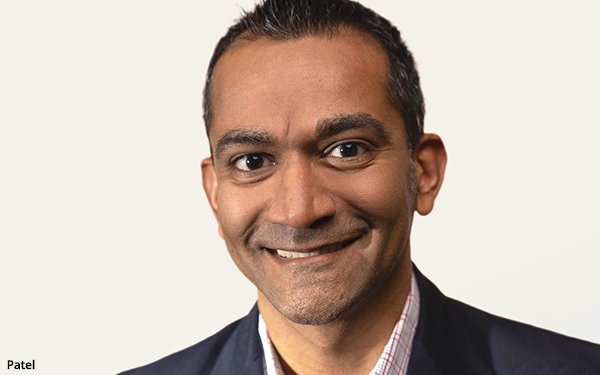
Swapnil Patel discusses how brands can approach AI with a
realistic timeframe while maintaining the right level of human oversight. He also shares advice on testing and learning to ensure platforms align with brand goals.
For brands that haven’t fully embraced AI yet, what do you see as a realistic timeframe for them to successfully integrate AI into their marketing
efforts?
Much like any adoption curve, we’ll see innovators, early adopters, the early majority, and eventually the laggards fold AI into their
marketing. Corporations are already investing billions into AI (as the Stanford AI Index
shows), and our industry is doing the same at a proportional scale.
advertisement
advertisement
For most brands, the smartest approach is to treat AI adoption like a media plan: test, learn, and
scale. Start with small, focused bets. See what gains traction. And fast-follow where the payoff is clear. Not every AI investment will deliver, so building in room for experimentation is
essential.
A guiding principle in our business is to follow the eyeballs, and right now, many of them are headed into AI-powered experiences. Just look at ChatGPT. It
surpassed 700 million weekly active users in August, and according to OpenAI’s Peter Fradin, “a huge portion” of the questions people ask are commerce-related.
Some users are searching for specific items, like black boots. Others are planning events or shopping for a birthday party. Each is an intent signal. And with the right application, AI
can turn those signals into measurable action.
That user behavior led directly to a new partnership between OpenAI, Shopify, and Etsy that enables instant checkout inside
ChatGPT. As Fradin put it:
“What we wanted to do is make it even easier for users to complete their journey in ChatGPT, and for merchants and
developers to convert those conversations into checkouts.”
It’s a clear signal of where AI investment is headed: toward reducing friction, not just through
productivity gains for internal teams, but by streamlining the consumer experience and shortening the path from discovery to decision.
So while there may be no universal
timeline for adoption, the direction is clear. The brands that win will be the ones willing to experiment, iterate, and evolve as quickly as their customers do.
Are there scenarios where you would advise to not hand over full automation and believe human oversight is required?
Absolutely. Platform defaults like “Spend by Seller State,” “Target New Exchanges,” and “Use Optimized Targeting” aren’t
designed to drive best-in-class performance for every client. We treat them as considerations, not set-it-and-forget-it solutions.
Take audience expansion, for example.
Leaving it on for a B2B campaign can quickly lead to overdelivery and wasted spend against the wrong audience.
Automation is evolving fast, but without human oversight
and purposeful decision-making, there’s a real risk of mistaking “good enough” for “great.” Checks and balances are how you ensure your media is working at its
smartest.
That’s why we set up intentional test-and-learn scenarios to validate whether platform benchmarks actually serve your business. Human oversight means
you’re not just taking the platform’s word for it, you’re pressure-testing every result against your specific goals.
Which attention metrics do you consider to be the most predictive of actual business outcomes?
The first step is
alignment on the primary business KPI: What does success really look like? There isn’t a single media metric that universally predicts outcomes. Over the years, CTR, viewability, and more
recently, attention metrics have all had their moment. But for us, it’s not about chasing a magic bullet. It’s about actively evaluating data partners and leveraging AI to cross-reference
different signals against decades of performance data.
This helps us identify smarter starting points for media plans, which we then refine through continuous
optimization. Media metrics will keep evolving, but the most predictive signals will always come from ongoing testing, not one-size-fits-all answers.
How can marketers tell the difference of when platform defaults are optimized for genuine attention or for selling more
inventory?
As the saying goes, the proof is in the pudding. Platform defaults can work in some cases, for certain categories, objectives, or campaigns,
and fail in others. The only way to know is to proactively generate hypotheses, test regularly, and compare results.
The trap is testing once or twice, then accepting
the outcome as “the new default.” Markets, audiences, and platforms change too quickly for that. The discipline is to keep testing and learning, so you’re scaling what’s
genuinely working for you, not just what’s most convenient for the platforms.
What show or
movie has been holding your attention lately?
With two daughters, ages 9 and 5½, we’ve been all-in on KPop Demon Hunters. The movie was fun
to watch, and based on the replay rate at our house, I’m pretty sure “Golden,” “Sodapop,” and “Takedown” will be right at the top of my Spotify Wrapped this
year. While the songs and story have been super entertaining, they’ve also sparked some surprisingly meaningful family chats about honesty and identity, thanks in part to a few thoughtful IG
posts that gave us the language to dig in with our girls.
If you’re interested in submitting content for future editions, please reach out to our Managing Editor,
Barbie Romero at Barbie@MediaPost.com.